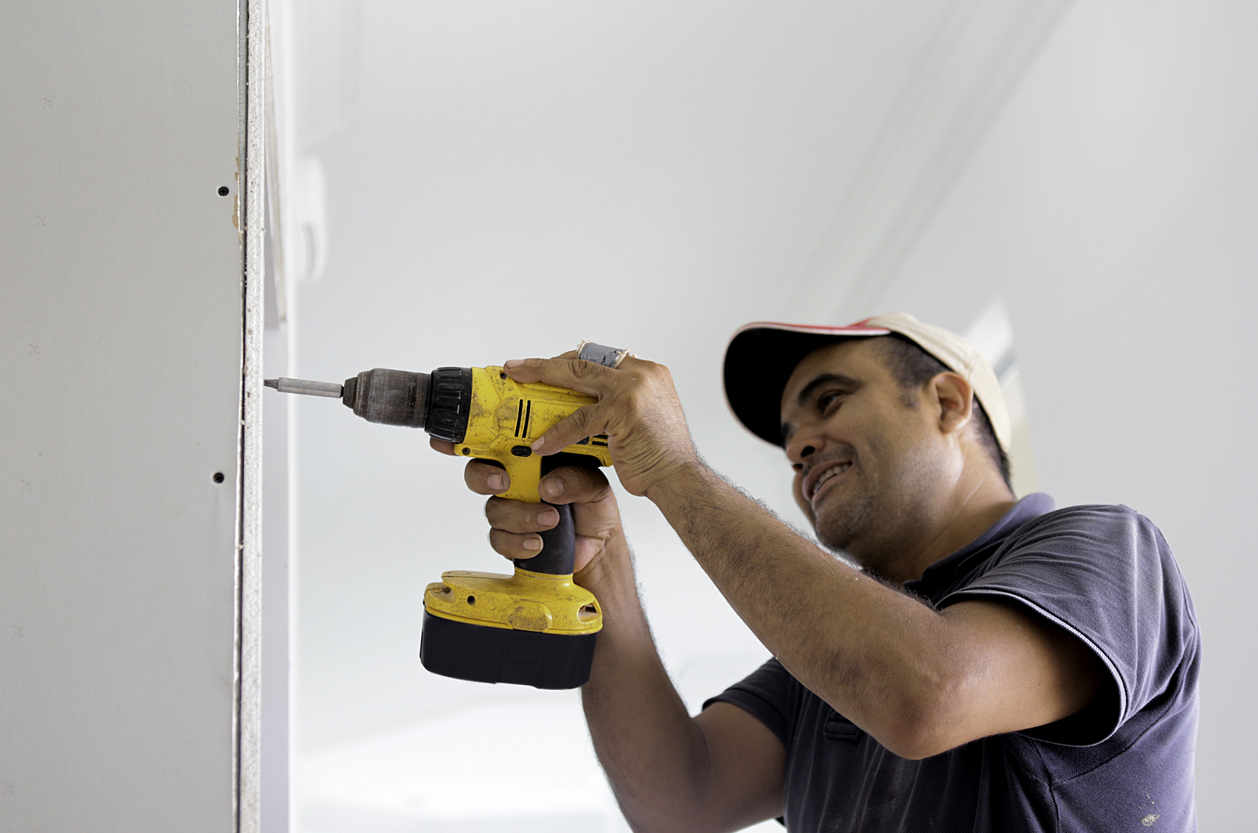
Drywall is a very commonly used product that has revolutionized how construction is done by cutting down the time and craftsmanship that was once needed for traditional lath-and-plaster walls and ceilings. It is a simple task to install drywall, and just about every commercially available drywall is made of gypsum plaster with a paper coating. Since the product is easy to work with and widely used in the construction industry, its risks can sometimes be overlooked. Specific installation requirements present a severe risk of injuries caused by overexertion and falls. Those who handle drywall should understand the hazards they face.
Quite a Heavy Material
The average drywall sheet weighs between 55 and 120 pounds. The sheet varies in size and composition. Even though that weight may not seem like too much to most workers, they may underestimate the damage that can be done from repetitive lifting and carrying. Holding drywall up can strain arm, neck, and shoulder muscles. Also, lifting while bending or twisting is much more strenuous on the back. When participating in drywall installation, it is important to have a proper plan in place. It is best to have the drywall delivered and dropped off as close to the jobsite as possible so that less lifting is needed. If sheets must be moved, carts, hand trucks, or dollies must be used rather than carrying them by hand. Whenever sheets are being lifted into place, be sure to work as a team or in pairs and when needed, set them down close to waist height, avoiding any swinging motion. Workers may be able to reduce the chance of strains and other muscle injuries by performing basic stretches before starting the project and periodically throughout the job.
Workers should be aware of any objects or obstacles in the way and always wear protective footwear to prevent injury if the sheet were to be dropped. This could easily break the bones. Grip gloves are also recommended while handling drywall. If the drywall placement is above the body, such as a ceiling installation, it is best to use a drywall jack or lift. Trying to hold, lift, and apply drywall simultaneously is how muscle strains occur, or sheets are dropped. Drywall should not be installed with a ladder or when working on an uneven surface.
Cart Challenges
It is important to address the challenges that come with using drywall carts. They can certainly be convenient and may reduce the risk of back injuries and strains. However, they also have hazards of their own. They must be loaded correctly. Otherwise, they could easily tip over. Each cart should always be guided by at least two workers, one at the front and one in the back. Workers should never attempt to ride on the cart, and when it is being rolled down an incline, those who could enter the cart’s path should be warned. Be sure to use the wheel locks during loading and unloading.
Dealing with the Dust
The plaster that drywall is made out of often creates lots of dust when it is cut. Supervisors must review the Material Safety Data Sheet (MSDS) concerning the drywall type being installed to make adequate mandates for the workers. This is how they will know the correct personal protective equipment they need to use. For instance, if they will be sanding asbestos-cement drywall, they will need to take the proper steps to avoid lung, eye, and skin irritation (i.e., safety goggles, respirators, long-sleeved clothing). Proper ventilation and dust-control measures will help reduce harmful dust exposure and spread to other jobsite areas.
More Important Considerations
When drywall is being hung or cut, it is crucial to pay close attention to what might be behind or adjacent to the wall. If the installation occurs where there are live electrical wires, the worker is at significant risk of electrocution. It is best to assume that there may be wiring or plumbing behind the drywall to make cuts accordingly.
It is advised to take short breaks to help the body recover from the stress and strain of working. If possible, rotating workers through tasks can help limit the potential for strain and help keep them more alert.
About Sine Insurance
At Sine Insurance Group, we are dedicated to providing you with custom-tailored insurance policies to protect your assets. Our comprehensive packages have been expertly crafted to serve St. Louis and the surrounding areas for the past 25 years. For more information about our products, contact us today at (855) 700-0889.

